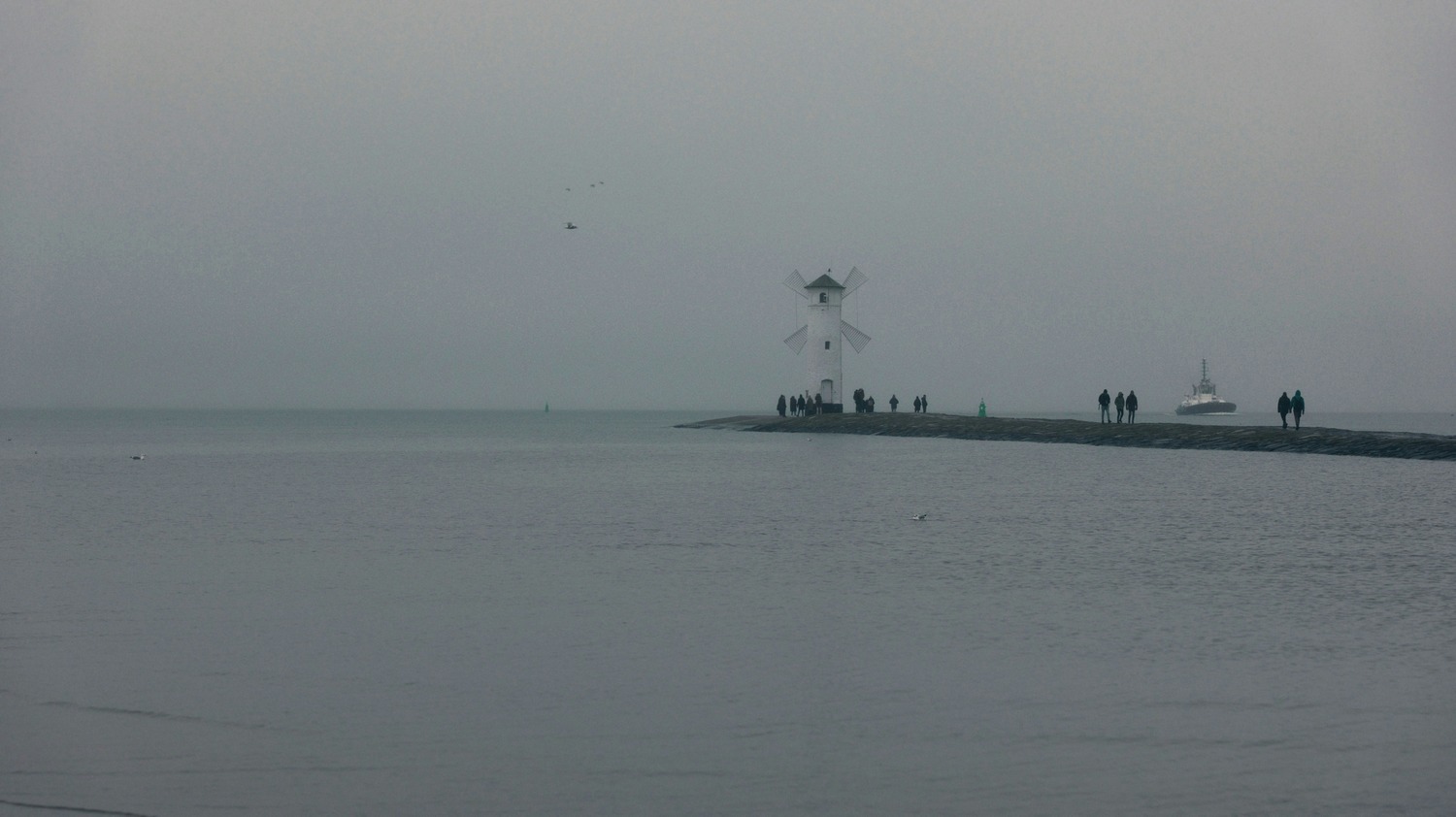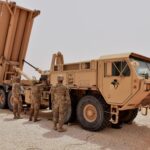A heavy-lift vessel slipped into the port of Świnoujście late on 21 November. Its deck held twenty-six U.S.-made M1A1 Abrams main battle tanks, fresh olive paint still matte from the Atlantic crossing. Below deck lay nine M88A2 Hercules armored recovery vehicles, pallets of spares, and crates of consumables. Dockworkers rolled the tanks onto low-loaders through the night while military police kept the quayside clear. At sunrise rail wagons stood ready for the long haul south to Żagań, where the 18th Mechanised Division will absorb the new armor.
The shipment closes the second tranche under Warsaw’s January 4 contract for 116 refurbished M1A1s valued at $1.4 billion, while the third batch of M1A1 Abrams tanks arrives in Poland this month as part of the ongoing deliveries. Washington covers almost $200 million of that bill through Foreign Military Financing, easing Poland’s record defense outlays. The remaining vehicles – another eighty-one tanks plus three Hercules, eight Joint Assault Bridges, six M577 command vehicles, and twenty-six NG SECM mobile workshops – are scheduled to arrive in monthly waves so that the entire package stands in Polish motor pools before Christmas 2024.
Polish M1 Abrams Deliveries Bolster Armored Brigades in Suwałki Gap
The convoy that came off the ship also included eleven M142 HIMARS rocket launchers, forming the third group delivered under Poland’s 2019 Homar division-fire-module contract. Those launchers stay in the “American configuration” until local engineers integrate Polish radios and battle-management software next year. Each tube-fed launcher gives the Land Forces a precision reach of up to 300 kilometers with ATACMS missiles and around 80 kilometers with GMLRS rounds, both guided by inertial and GPS updates.
The day’s cargo at a glance:
- 26 × M1A1 Abrams MBTs
- 9 × M88A2 Hercules ARVs
- 11 × M142 HIMARS launchers
- Palletized stocks of tracked-vehicle spares, engines, filters, and lubricants
- Consumable packs for launcher test and calibration
- Rail and road adapters, tie-down kits, and workshop tooling
The date of arrival was no coincidence. Poland marks Tank and Automotive Service Day on 21 November, celebrating the first post-war tank regiment raised in 1944. By timing the docking to that anniversary the Armament Agency linked past and future, signaling that U.S. armor now anchors the army’s drive to field three heavy divisions east of the Vistula.
Poland HIMARS Program Expands Long-Range Precision Firepower
Defense Minister Mariusz Błaszczak, addressing soldiers on the pier, called the delivery “another brick in the wall of Polish security.” He stressed that every Abrams crew will train at home thanks to the Poznań-based Abrams Academy, opened in April with help from the U.S. 1st Cavalry Division. Classroom simulators mirror the tank’s fire-control software, and instructors drill turret crews in ten-session blocks that alternate with live-fire days at Świętoszów.
June’s initial batch of fourteen M1A1s already patrols that range. Officers there report that the digital fire-control suite shortened gunnery qualification time by a third compared with legacy Leopard 2A4s. The crews praise the tank’s separate‐loader bustle magazine for speeding reloads and limiting propellant fumes in the turret. Maintenance staff note that line-replaceable modules cut troubleshooting time, though the gas-turbine engine requires strict fuel logistics.
HIMARS crews meanwhile rotate through Toruń for certification. Each five-day cycle ends with a single live GMLRS ripple: six rockets streaking eastwards across the restricted zone at Drawsko Pomorskie. The ministry keeps the missile expenditure modest, but even that brief volley forces new procedures for civilian air-traffic control, range clearance, and satellite-based time synch that differ from legacy BM-21 Grad drills.
Poland Abrams and HIMARS Orders Drive Industrial, Tactical Shift
Warsaw’s shopping list reaches further. In April 2022 it signed a separate $4.75 billion letter of offer and acceptance for 250 M1A2 SEP v.3 tanks and related gear, including another twenty-six Hercules and seventeen Joint Assault Bridges. Delivery was penciled in for 2025–2026. Officials now hint that the first SEP v.3 hulls could arrive twelve months ahead of plan, riding the same logistics chain tested by today’s M1A1 batches. Romania’s M1A2 Abrams tank buy illustrates how multiple allies are aligning procurement schedules with strategic timelines.
The Armament Agency says the two Abrams variants will coexist. M1A1s will fill battalions that guard the Suwałki Gap, where speed and proven reliability outweigh every last digital upgrade. The newer SEP v.3s, with their improved II²S thermal viewer, Trophy active protection, and upgrade-ready architecture, will equip a planned armored brigade that pairs directly with the army’s new K2PL Black Panther units. That mix spreads risk across suppliers and eases strain on any single supply chain.
Homar-A and HIMARS Boost Firepower While Reshaping Doctrine
Each arriving tank lands with U.S.-provided war-stock ammunition. The first loads cover crew training: M865 target practice sabot and M1002 multi-purpose round. War-reserve lots of APFSDS-T and high-explosive programmable shells follow by rail in sealed CONEX boxes monitored by Żandarmeria guards. Poland’s Mesko plant is negotiating a license to load the XM1147 Multi-Purpose round on-shore once its insensitive-munitions line finishes a two-year upgrade.
Industrial Base and Supply Lines Scale Up for Abrams Integration
Logistics planners highlight the Herculean support fleet. The M88A2 can tow a combat-loaded Abrams off a damaged bridge or pull a track-thrown tank out of drainage ditches common in the Masurian Lakes district. Joint Assault Bridge vehicles arrive later; until then pontoon units will handle main-river crossings, leaving gaps on smaller tributaries that commanders must map carefully.
Industry also benefits. PGZ’s WZM facility at Poznań will over-haul engine modules after 1,000 operating hours. Jelcz supplies eight-by-eight tank transporters built under a 2022 framework deal. Huta Stalowa Wola cuts armor plate for spare parts lockers, and Łukasiewicz-PIAP adapts its UGV board to carry Abrams-specific line-replaceable units across contested roads. None of these lines existed eighteen months ago; procurement managers call it the fastest industrial spin-up since the 1990s F-16 program.
NATO Observers Watch as Poland Streamlines Heavy Armor Logistics
The U.S. Army Europe G-4 office coordinates sealift under Atlantic Resolve. One chartered U.S.-flag ro-ro steams monthly from Charleston through Bremerhaven to Świnoujście. Cargo is stowed between other NATO consignments, making each hull less conspicuous than a single-purpose Abrams flotilla. After off-load a German rail operator hauls the kit across the Oder to Polish track. The journey’s pacing points double as rehearsal for emergency reinforcement.
NATO peers take note. Lithuanian observers watched the unloading to refine their own port-security drills. A Czech delegation studied the rail ramps. The alliance still lacks a single border-crossing permit, so Warsaw asks Brussels to create a military Schengen pass before the heavier SEP v.3 convoys roll in two years.
In the political arena, this delivery signals what Warsaw calls “two-track insurance.” South Korean K2PLs diversify supply, yet Abrams tie Poland to U.S. spare-parts stocks and training networks. Lawmakers who once doubted the cost now see value in redundant channels after Russia struck Ukrainian repair sheds with cruise missiles in early summer.
HIMARS Expansion Redefines Long-Range Firepower and Doctrine
Beyond armor, long-range fires remain a headline. Eleven new HIMARS bring the fleet to eighteen, minus two launchers kept for schoolhouse duty. In battlefield simulations they will suppress road-mobile Iskander launchers in Kaliningrad within six minutes of detection. Their CAMP Fire-Control tablets already sync with the Pilica + short-range air-defense grid. Next year engineers add the Topaz combat-management suite, letting Polish radars cue U.S. rockets without foreign intermediaries.
The Homar-A framework signed in September widens that concept. Up to 486 Polish-assembled HIMARS, mounted on Jelcz six-by-six trucks, will replace the entire inventory of post-Soviet Grad systems by 2028. Warsaw and Lockheed Martin still review offset clauses, but both sides agree that first serial vehicles must leave the Stalowa Wola line early in 2026.
Taken together, Abrams and HIMARS shift Poland’s deterrent from quantity to precision mass. One battalion of sixteen HIMARS covers lines that once needed a regiment of Grads. An Abrams platoon punches through wet ground that stalls T-72s. For front-line troops the change is concrete: fewer vehicles to maintain yet stronger hitting power.
The Polish Army’s doctrine desk already rewrites maneuver tactics. Commanders plan tank-led fire assaults where HIMARS batteries create openings, then armored companies exploit. Field manuals still teach classic breakthrough diagrams, but new annexes layer satellite-guided salvos over armored thrusts. In effect, Poland compresses lessons that the U.S. Army learned over decades into three fiscal cycles.
Opponents watch. Russian telegram channels called the delivery “escalatory,” yet satellite pictures confirm Baltic Fleet landing ships practicing rapid dispersal before cruise-missile strikes can hit moored vessels. Belarus extended its tank gunnery season at the Brest training area by two weeks. Deterrence cuts both ways, but Warsaw insists that transparent procurement stays inside NATO norms.
With the night’s off-load complete, the second tranche of trailers rumbled onto the expressway toward Poznań. Orange beacons flashed under freezing drizzle, the convoy escorted by Żandarmeria outriders who kept civilian traffic at a crawl. Morning commuters on the S3 motorway gawked at the sight – U.S. steel now rolling under Polish license plates, a sign that the country’s biggest defense gamble in thirty years has moved from paperwork to cold metal.
Abrams Arrive, HIMARS Expand, and Poland’s Defense Spending Hits Record – March 2025 Update
March 3, 2025 – Two winters have passed since the second M1A1 tranche reached Świnoujście, and the modernization schedule has accelerated. In mid-January 2025 a heavy-lift carrier docked at the same quay with twenty-eight brand-new M1A2 SEP v.3 tanks, the first wave of a 250-vehicle order cleared by the U.S. Congress three years ago. Customs checks took a single afternoon because border staff had rehearsed the manifests on earlier M1A1 arrivals. Within forty-eight hours the new tanks rolled onto rail flats bound for the 1st Warsaw Armoured Brigade.
Polish crews felt at home in minutes; they trained on a SEP v.3 simulator block installed last summer at the Poznań academy. The primary difference lies in the upgraded II²S thermal viewer and a more intuitive driver’s panel. Mechanics point to simplified wiring runs that halve troubleshooting time. Live-fire calibration at Świętoszów saw the first round from the new Abrams land within three meters of aim at 2,000 meters, an adjustment of just two clicks from the factory boresight.
Homar-A Launcher Program Gains Momentum
HIMARS milestones kept pace. By December 2024 the Armament Agency declared the original twenty-launcher Homar division module fully operational. All crews completed night GMLRS shoots, and the last two schoolhouse launchers transferred to line batteries after software upgrades. This achievement freed instructors to focus on the larger Homar-A program. Framework negotiations with Lockheed Martin closed in February, locking domestic work share at 70 percent of chassis and 50 percent of fire-control electronics. The first prototype Jelcz-mounted launcher left the Stalowa Wola plant last week for static checks. Saudi Arabia also plans to upgrade M1A2 to M1A2S Abrams tanks, showing global demand for platform improvements.
Budget Surge Fuels Rearmament and Industry Growth
Poland’s defense budget for 2025 hit 4.7 percent of GDP, the highest among NATO states. Lawmakers earmarked fresh funds not only for Abrams sustainment kits but also for a national rocket-motor line that will reload both HIMARS and the South Korean Homar-K Chunmoo systems now deploying with artillery brigades. Finance ministry briefings confirm that treasury guarantees back the payments until 2030, insulating suppliers from electoral swings.
New Tactics Emerge as Abrams and HIMARS Train Together
On training grounds the impact is visible. During the recent Dragon 25 exercise, an Abrams company advanced behind a HIMARS-laid curtain of smoke-marker warheads that covered flanking infantry. Battle captains praised the mix of range and armor. U.S. observers from V Corps called the drill “a generational leap” over maneuvers they watched in 2022. Polish planners now draft doctrine that pairs incoming K2PL tanks with SEP v.3 units, using M1A1 formations as a mobile reserve west of the Bug River.
Domestic Industry Surges Ahead in Tank and Launcher Support
Industry momentum grows with every shipment. PGZ reports that its Poznań shop delivered the first over-hauled AGT-1500 turbine six weeks ahead of schedule. Łukasiewicz-PIAP fielded a tracked drone able to swap Abrams power packs without crane support, and a Łódź electronics start-up won a contract to locally produce replacement control panels for the launcher erector, replacing U.S. suppliers and cutting repair queues.
Regional Cooperation Deepens as Poland Expands Its Role
Diplomatically, the January tank landing spurred visits. Earlier, Poland received first AH-64D Apaches to prepare for Guardian Fleet, marking a parallel track in air combat modernization. Latvia signed a memorandum for shared spare-parts stockpiles, while Norway sent logisticians to study the rail routing model. NATO’s Multinational Corps North-East updated its reinforcement plan to include two Polish Abrams brigades on day three of any crisis, a role once reserved for German Leopard units.
Critics remain, mainly over cost. Senate defense committee members question whether the existing fuel pipeline can sustain turbine logistics at wartime tempo. The ministry counters that new rail-tank wagons will top up forward depots, and that future Abrams may switch to a hybrid-electric drive now in U.S. testing. For now, the tanks run on standard JP-8 drawn from NATO common stocks.
Looking ahead, the Armament Agency schedules the next SEP v.3 batch – nineteen tanks and four Hercules – for late March. That convoy will close the winter delivery gap and push the active SEP v.3 inventory to forty-seven. By summer, Warsaw expects the first Homar-A serial launcher to fire a production rocket at Ustka range, sealing the transition from imported systems to a mixed U.S.–Polish supply chain that Brussels analysts already label a model for regional rearmament.
REFERENCE SOURCES
- https://defence-industry.eu/third-batch-of-m1a1-abrams-tanks-arrives-in-poland/
- https://notesfrompoland.com/2023/01/04/poland-approves-1-4-billion-deal-to-buy-116-abrams-tanks-from-us/
- https://www.euronews.com/2023/05/16/poland-takes-first-delivery-of-us-made-himars-rocket-launchers-amid-concerns-over-ukraine-
- https://www.defensenews.com/land/2023/09/11/poland-to-buy-486-himars-launchers-from-lockheed-martin/
- https://www.dsca.mil/press-media/major-arms-sales/poland-m1a2-sepv3-main-battle-tank
- https://armyrecognition.com/news/army-news/2025/breaking-news-poland-receives-first-28-us-m1a2-sep-v3-tanks-bolstering-europes-tank-superpower-status
- https://militarywatchmagazine.com/article/polish-army-receives-new-batch-abrams
- https://foundation.alioth.group/en/himars-in-poland-deliveries-completed/
- https://news.lockheedmartin.com/2023-09-11-polands-ministry-of-national-defense-signs-framework-agreement-with-lockheed-martin-for-homar-a-rocket-artillery-system-program
- https://novayagazeta.eu/articles/2025/05/09/active-defence-en



